Categories: Featured Articles » Electrician at home
Number of views: 6252
Comments on the article: 0
What is an electric cord and where is it used
There are three main types of products for connection - these are cables, wires and cords. The first two types are very similar and often differ mainly in the technical conditions of the manufacturers and the definitions used in them. And the third type - cords has some features, for example, the cross-sectional area of these products rarely exceeds one and a half square millimeters, and their flexibility is very high. Therefore, we will tell you about electric cords and their scope.

Definition and structure
To understand the electrical engineering terms and for their correct understanding, you need to refer to the legal documentation, such as GOSTs, SNiPs and other documents. GOST 15845-80. “Cable products. Terms and definitions "electrical cord is defined as" electrical wire with insulated conductors of a high class of flexibility.
Moreover, in various sources you can find information that the maximum cross-sectional area of their conductive conductors can reach only 1.5 square meters. mm This is not a completely true statement, because the ShVVP cord, popular with modern electricians when installing lighting, can have conductors up to 4 square meters. mm, and in rare cases more. But still, such a restriction distinguishes it against the background of cables or wires, whose cross section can reach hundreds of square millimeters in area.
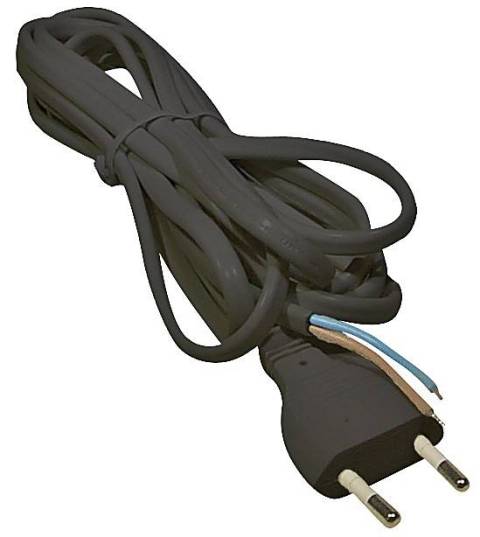
Interesting:
The name cord for many echoes the word "lace" as on boots. The fact is that this is partly true. The cords produced before the middle of the last century (in the USSR) had two stranded conductors in rubber insulation covered with a woven cotton jacket. The veins were twisted together, and not poured into a common shell, and it really looked like shoelaces. You can remember them by electric stoves, irons and more.
Thin cores, consisting of a set of thin twisted wires combined with a plastic sheath, give the cords good flexibility. For example, the same ball screw has a flexibility class 5, this allows it to be easily laid in a very limited space or used to connect devices that move during operation. These include elements of household appliances (blender, electric shaver, kettle) or a power tool.
To summarize, what are the distinguishing features of an electric cord?
1. Usually 2 or 3 conductive wires.
2. Flexible stranded copper conductors.
3. The flexibility class is of the order of 4 or 5.
4. To ensure good flexibility, rubber was previously widely used.
5. The shell can be covered with wicker fabric of threads, for example, SRW (the shell of which is made of synthetic, dacron, and threads you can see in the figure below).
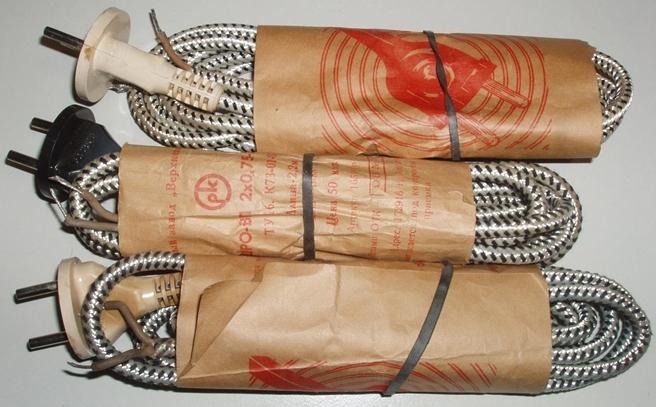
Scope of application
We have already mentioned that electric cords are used in electric tools and other mobile household appliances, we will consider this issue in more detail. To begin with, the cross-sectional area of the conductors of most electrical cords rarely exceeds 1.5 square meters. mm But for beginners, the question often arises “Why is the cord more suitable for technology than a wire, for example, PVA (a copper wire in vinyl insulation and a sheath connecting)?”, You can not give such an unambiguous answer, because you can use the product that you have under hand, but what will happen?
All very simply the main advantage of an electric cord is its flexibility, and its small cross section means low weight. Therefore, if you want to replace the wire on the blender - you do not need to buy the same PVA (see it in the photo below) - it weighs more, is not so flexible and it will make it difficult to work with the device.

Whereas as a cord for an electric drill is often used PVA wire, because it has a thicker shell, and its round cut provides good protection against damage that can easily occur at a construction site or workshop.
While the use of special cords in a fabric braid is used to connect the irons, why is PVA not suitable here, because it is also round and durable? Everything is just a braid of the cord for the iron serves as additional protection against chafing.

Therefore, they use a ShRO cord, we will consider it in more detail later. Pay attention, when you iron the linen, the cord constantly rubs against the edge of the ironing board, the insulation will not last long in such work.
Cord Stamps
The letter “Ш” is usually present in the markings of the cords. Let's look at a few examples.
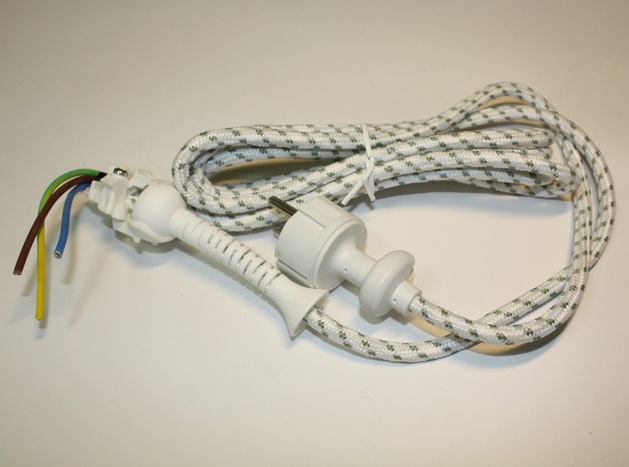
Schro, marking stands for:
-
W - cord;
-
P - rubber insulation;
-
About - a braid from mylar threads (this is synthetics).
His veins are twisted together, the braid is resistant to abrasion. Twisted veins are filled with yarn - this you can see in its schematic image in the figure below. This solution makes the product more durable and dense, while maintaining its flexibility. By the way, flexibility class 5.

The color of the outer braid is black and white according to GOST 7399-97, is found in a two-core or three-core version, and the dimensions and weight are indicated in the table below:
It is noteworthy that in stores it can be found under the non-trivial name "Cord for the iron."
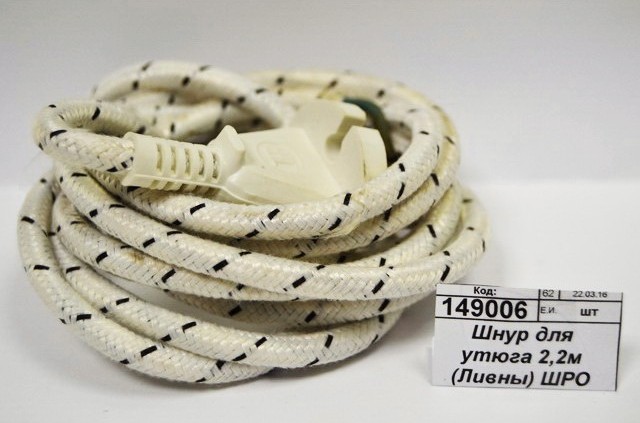
Ballscrew decoding markings:
-
W - cord;
-
B - vinyl insulation;
-
P is flat.
This is a copper cord with parallel conductors, each of which is covered with a layer of PVC insulation. It does not have a common casing, so it is allowed to connect non-stationary electrical equipment, with an insignificant probability of mechanical stress and damage.
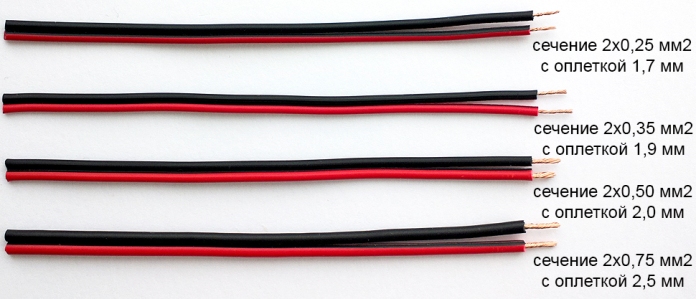
Ballscrews are often used in auto electrics and for connecting elements inside electronic devices. It has 6 class of flexibility, which allows you to bend the product for installation in limited conditions. The dimensions and weight of the ballscrews are shown in the table below.
Ballscrew, transcript of marking:
-
W - cord;
-
B - vinyl insulation;
-
In - a vinyl cover;
-
P is flat.
The veins in it are laid in parallel, on top of them is a common shell. Two-layer insulation provides good performance. As already mentioned in the article - it is often used to connect lighting circuits, for example, it is convenient pave in a false ceiling.
Conclusion
The conclusion suggests itself - the choice of cable products directly depends on the operating conditions. The cords are great for devices that are highly mobile during use, as well as for stationary devices such as a television, that is, low-power and plugged into an outlet.
See also at i.electricianexp.com
:
